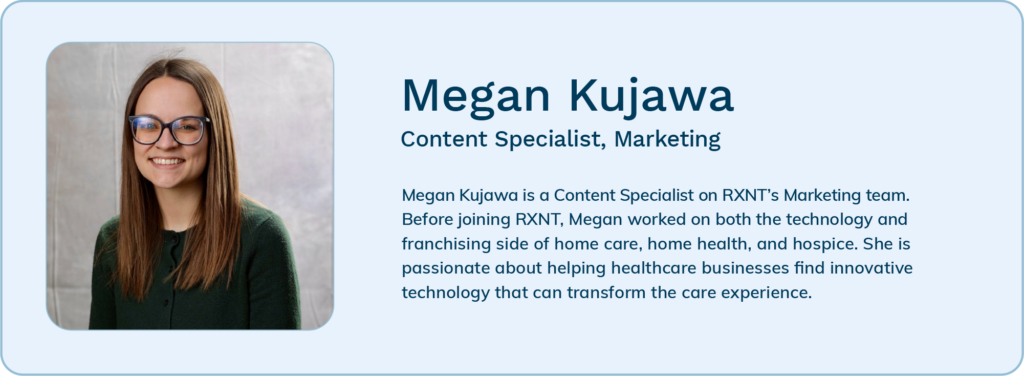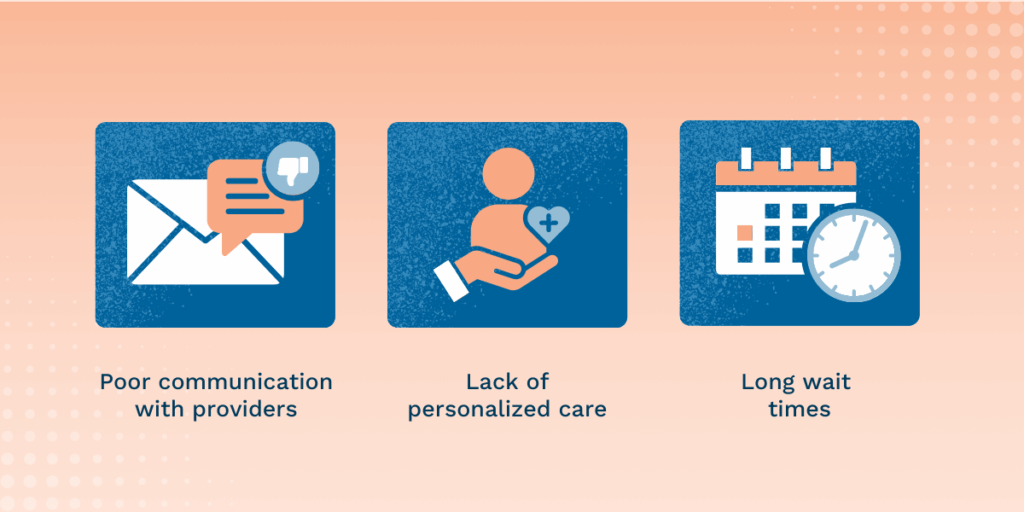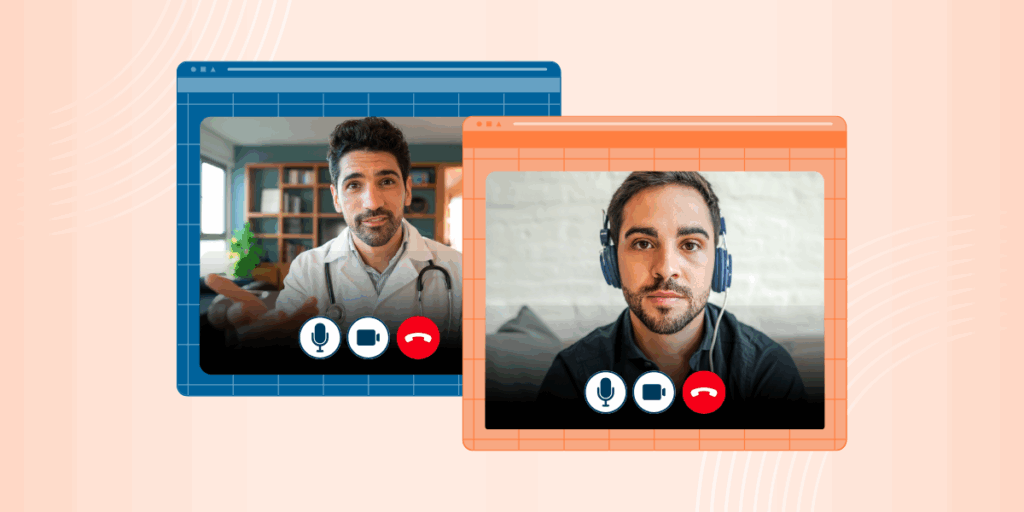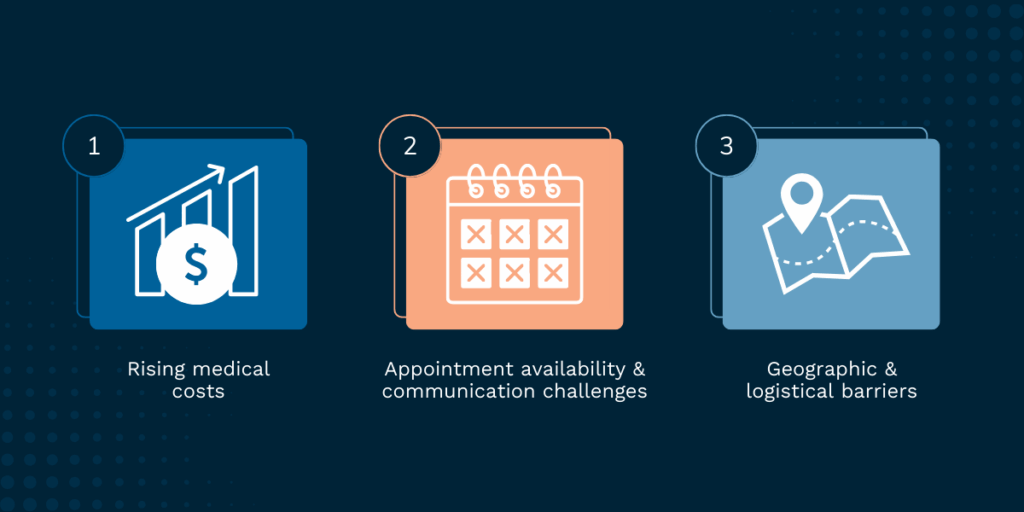What’s holding some practices back from adopting tools that could transform their organization? Often, it’s due to common myths and misconceptions about healthcare technology.
There are countless healthcare solutions designed to help providers optimize operations, improve communication, and drive better patient outcomes. With these significant advantages, what’s holding some practices back from adopting tools that could transform their organization? Often, it’s due to common myths and misconceptions about healthcare technology.
Below, we address the six most common misconceptions and why they don’t hold up.
Misconception #1: Healthcare Technology is Too Costly for Growing Practices
You might assume that implementing new healthcare tech comes with a large price tag. While there is an upfront investment, the right solutions deliver a measurable return on investment (ROI). Your practice may see reduced overhead expenses, improved operational efficiency, or increased revenue after adopting the right technology.
For example, you might implement automated scheduling and billing systems to reduce administrative workload and allow staff to focus on patient care. Or you may lean on healthcare tech to minimize documentation and claims processing errors. These tools often lead to faster reimbursements and fewer denied claims. As such, healthcare tech is more of a strategic investment than just an expense. Ideally, it provides significant financial returns over time.
Misconception #2: Artificial Intelligence is Too Risky for Use in Healthcare
Artificial intelligence (AI) in healthcare often generates buzz and excitement. It also sparks concerns about safety, reliability, and ethics. However, despite the common misconception, AI isn’t replacing healthcare providers. Instead, it’s supporting them. AI solutions are already supporting providers with administrative tasks and by improving diagnostics. AI is even being used to personalize treatment plans based on patient data.
Feeling hesitant about diving into AI? Start small. For example, you could use AI-powered voice recognition tools for note-taking and reduce time spent on documentation. As you get more comfortable with AI, you could explore advanced applications like predictive analytics for patient outcomes or AI-assisted image analysis.
Misconception #3: Transitioning to New Healthcare Software Requires Too Much Time
Time is a precious resource in healthcare. Many providers and staff worry about disrupting essential operations when considering switching to more efficient healthcare technology.
The key is to lean on proper planning and implementation. Look for a solutions provider that offers phased rollouts, training programs, and dedicated support. That will help you achieve a smooth, sustainable adoption process. Be sure to select a solution that integrates well with your existing workflows to maximize efficiency.
It’s also important to remember that well-implemented healthcare technology often boosts productivity in the long run. For example, Inview Imaging has saved over 650 hours of work each month by switching to RXNT’s medical billing software. Their team sends over 2,000 statements per month. Today, they complete the process in less than 30 seconds with the help of RXNT’s software. Ultimately, the new solution has led to long-term efficiency gains.
Misconception #4: Health Tech Isn’t Secure Enough
Another common misconception is that all digital healthcare tools expose patient data to unnecessary risks. Data breaches are a legitimate concern that can be addressed by implementing stringent cybersecurity measures to protect sensitive information. Examples of these measures include:
- Advanced encryption
- Multi-factor authentication
- HIPAA-compliant safeguards
- Cloud-based solutions that have continuous security updates and monitoring
- Educating staff on best practices for data security
Misconception #5: Healthcare Technology Makes Patient Care Too Impersonal
There’s also the worry that the increased use of technology will create a barrier between patients and providers. In reality, healthcare technology often enhances the patient-provider relationship. This is achieved by improving communication, accessibility, and engagement.
For example, patients can contact providers easily through secure messaging platforms. This eliminates unnecessary office visits and ensures timely responses. Furthermore, patient portals give individuals direct access to their medical records, test results, and appointment scheduling. These capabilities empower them to take charge of their health.
Misconception #6: Added Technology Will Be a Hassle for Patients
Patients are often thought to resist new technology, but research suggests the opposite is true. Our 2024 HealthTech Perspectives report found that 53% of U.S. consumers believe adding more technology to healthcare settings would improve their patient experience.
Patients appreciate the convenience that digital tools provide, such as online appointment scheduling, virtual consultations, or access to medical records from their smartphones. By offering user-friendly solutions and clear instructions, practices can help patients embrace these tools.
The reality is that the best modern healthcare solutions are secure, user-friendly, and beneficial for both providers and patients. The key is choosing a technology provider that prioritizes these features and your success. At RXNT, we’re proud to be that partner for ambulatory care providers like you. Ready to learn more about how the right tools can benefit your practice? Explore our solutions today.





